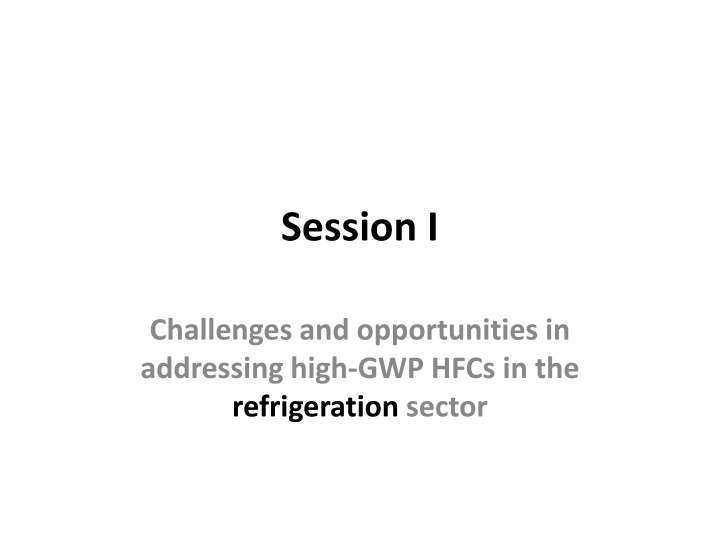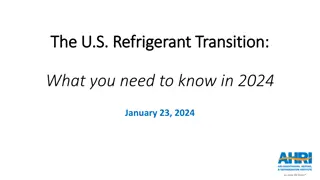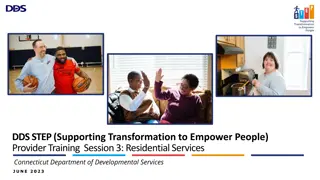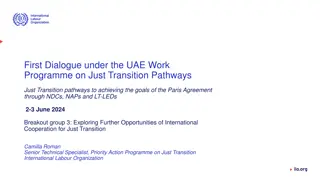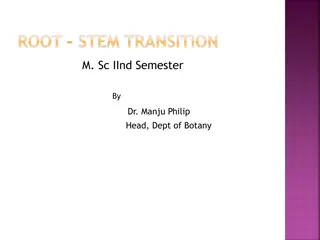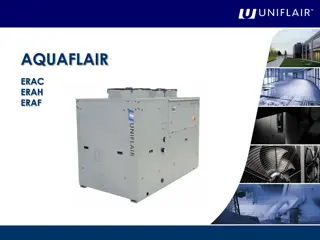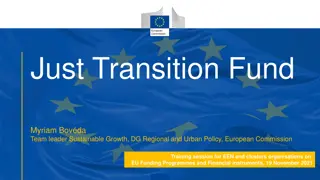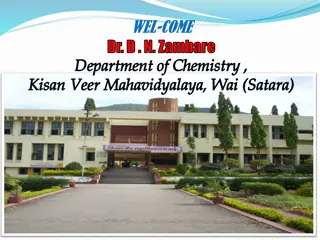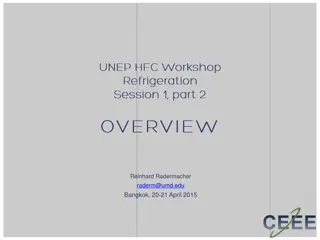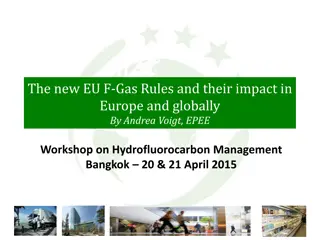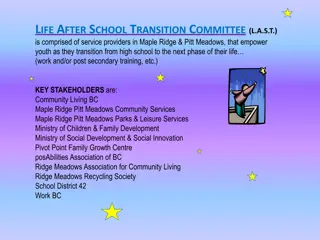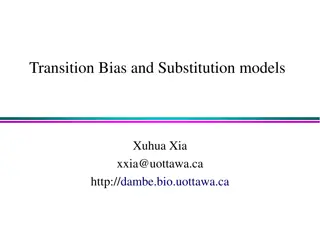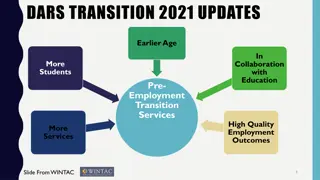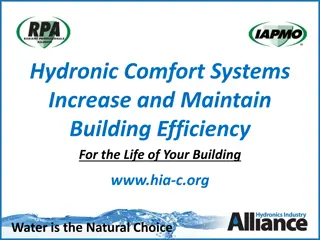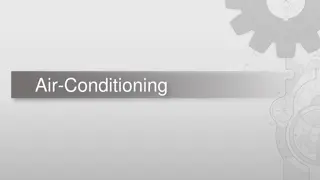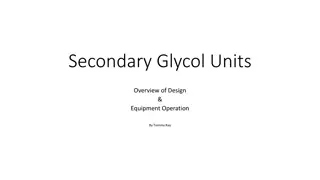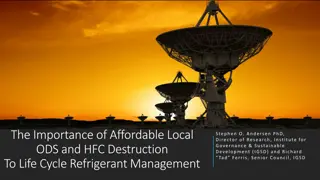Challenges and Opportunities in Refrigerant Transition
Addressing high-GWP HFCs in the refrigeration sector poses challenges but also offers opportunities for innovation and sustainability. Different types of refrigeration systems and their impact on the environment are discussed, along with the need for transitioning to low-GWP alternatives. Various solutions for domestic, commercial, industrial, and transport refrigeration are explored, emphasizing safety standards, flammability considerations, and the importance of education and technology advancement. The workshop highlights the complexity of finding a single fluid solution and the importance of global cooperation in promoting environmentally friendly refrigerants.
Download Presentation

Please find below an Image/Link to download the presentation.
The content on the website is provided AS IS for your information and personal use only. It may not be sold, licensed, or shared on other websites without obtaining consent from the author.If you encounter any issues during the download, it is possible that the publisher has removed the file from their server.
You are allowed to download the files provided on this website for personal or commercial use, subject to the condition that they are used lawfully. All files are the property of their respective owners.
The content on the website is provided AS IS for your information and personal use only. It may not be sold, licensed, or shared on other websites without obtaining consent from the author.
E N D
Presentation Transcript
Session I Challenges and opportunities in addressing high-GWP HFCs in the refrigeration sector
Session 1 - Refrigeration Overview speakers Mr. Reinhard Radermacher Mr. Paulo Vodianitskaia Panellists 11 presenters From A 5 contries and Non A 5 countries April 21, 2015 UNEP HFC workshop, Bangkok Ullrich Hesse
Refrigeration Domestic (2 % CO2 equivalent) refrigerators, freezers, combinations Commercial (73 % CO2 equivalent) plug-in, condensing units, centralized Industrial (20 % CO2 equivalent) small, medium, large Transport (5 % CO2 equivalent) road, container, ship April 21, 2015 HFC workshop, Bangkok Ullrich Hesse
Refrigeration Refrigerated food medium temperature: 0 .. 8 C low temperature: -18 .. -25 C Industrial refrigeration: wide range of temperatures and capacities No one single fluid solution April 21, 2015 HFC workshop, Bangkok Ullrich Hesse
Domestic HC-600a about 500 Mil. systems reliable, safe and efficient HFC in NA and associated markets due to safety standards April 21, 2015 HFC workshop, Bangkok Ullrich Hesse
Commercial - Plug-in / stand-alone HC for smaller systems up to 150 g some with larger refrigerant charge available now Low GWP HFC, HFO depends on commercial availability before 2020 Training and education on flammability April 21, 2015 HFC workshop, Bangkok Ullrich Hesse
Commercial Condensing units Flammable or toxic refrigerants are not an option Low GWP HFC, HFO on commercial availability expected before 2020 acceptance of A2L to be clarified CO2in EU, NA and Japan technology need to spread-out globally after 2020 Ammonia and flammables with secondary refrigerant April 21, 2015 HFC workshop, Bangkok Ullrich Hesse
Commercial Centralized Low GWP HFC, HFO on commercial availability before 2020 acceptance of A2L to be clarified CO2in EU, NA and Japan transcritical or cascade technology need to spread-out globally after 2020 Ammonia and flammables with secondary refrigerant April 21, 2015 HFC workshop, Bangkok Ullrich Hesse
Industrial Some niche products will continuously need HFC CO2similar as in commercial Ammonia already in use direct or with secondary refrigerant ammonia / CO2cascade Technology transfer from Non-Article 5 to Article 5 countries ammonia, CO2 on industry decision April 21, 2015 HFC workshop, Bangkok Ullrich Hesse
Transport Wide range of ambient and product temperatures CO2systems for road and reefer container Systems have been developed and are not in use yet Higher costs Efficiency at hot ambient to be confirmed Flammable refrigerants for road and reefer container Safety is currently under assessment for A3 and A2L First systems might roll-out in 2018 April 21, 2015 HFC workshop, Bangkok Ullrich Hesse
Trainings and Education Awareness Leak reduction by technology improvement and quality assurance Technology and safety Design, manufacturing and service CO2 Ammonia Flammables A3 and A2L April 21, 2015 HFC workshop, Bangkok Ullrich Hesse
